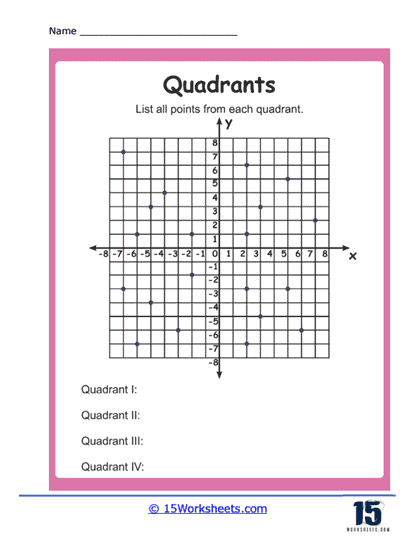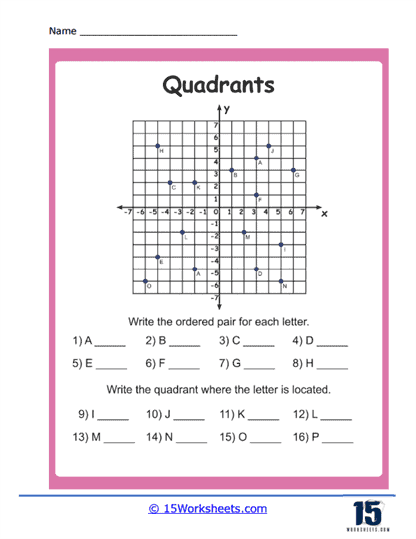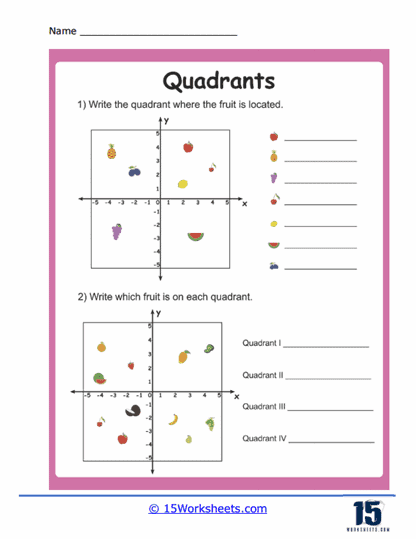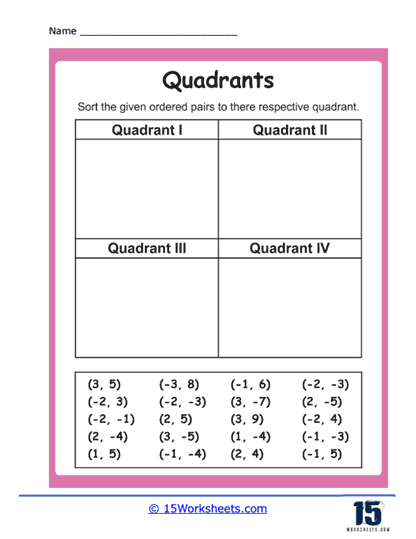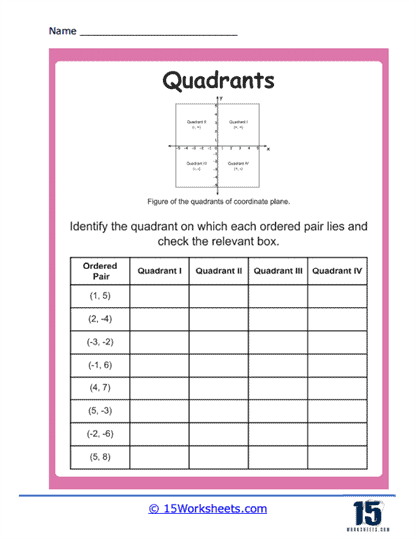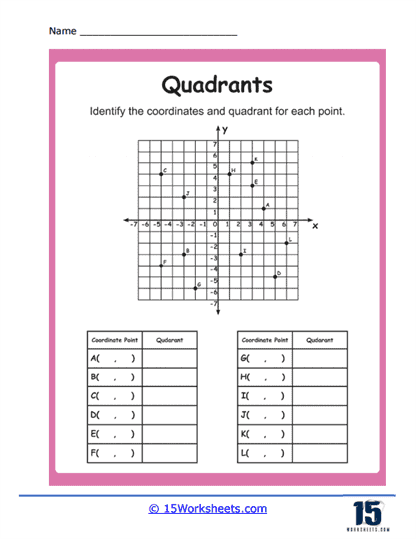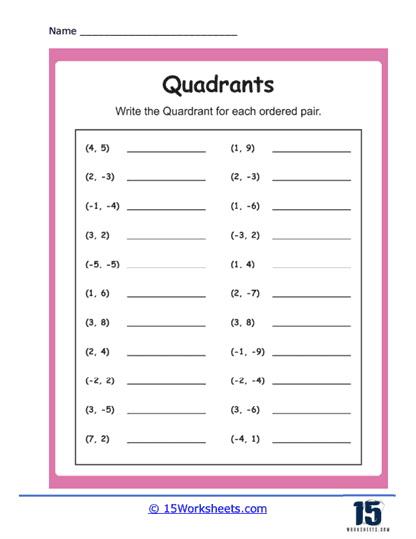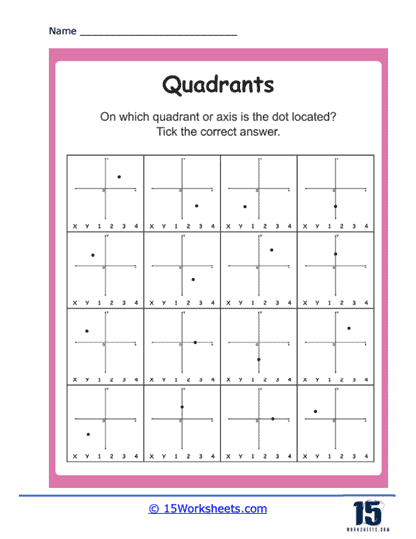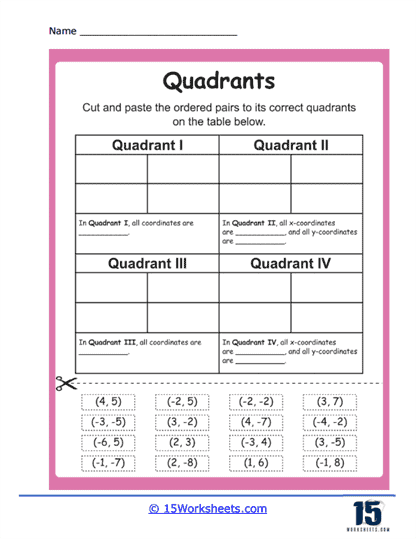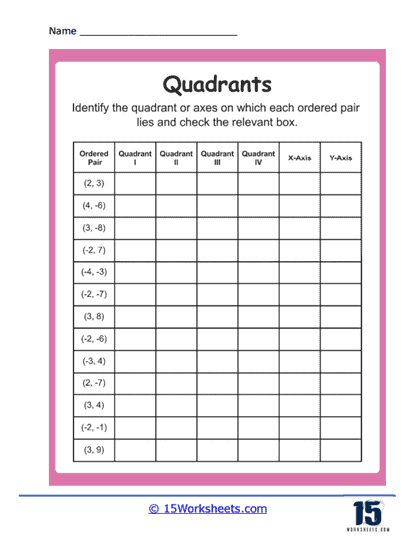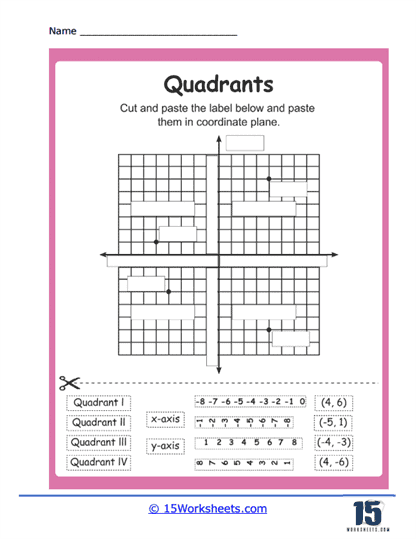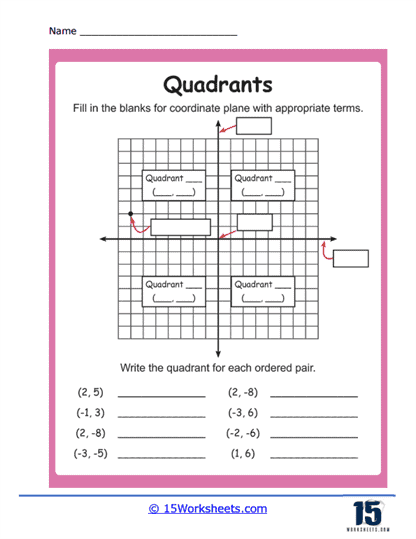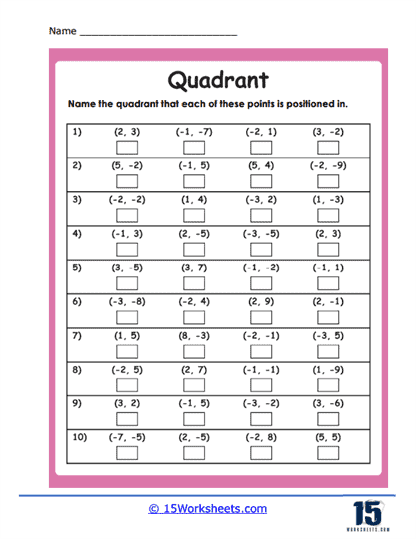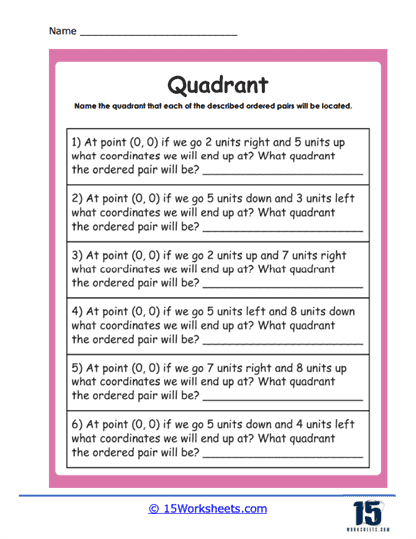Quadrants Worksheets
About These 15 Worksheets
Quadrant worksheets are tools designed to teach students about the four quadrants that exist in a two-dimensional coordinate plane. The coordinate plane, also known as a Cartesian plane, consists of two perpendicular lines or axes – the x-axis, which runs horizontally, and the y-axis, which runs vertically. The point where these axes intersect is called the origin, and it creates four distinct areas, or quadrants.
The four quadrants are labeled counterclockwise from the top right. The first quadrant (Q1) is where both x and y are positive, the second quadrant (Q2) is where x is negative and y is positive, the third quadrant (Q3) is where both x and y are negative, and the fourth quadrant (Q4) is where x is positive and y is negative.
Now, let’s discuss the various types of exercises you can expect to find on quadrant worksheets:
1. Identifying Quadrants – One of the most common types of exercises on these worksheets involves identifying which quadrant a given point lies in. For example, students might be asked, “In which quadrant is the point (3, -2)?” These exercises are a great way to help students practice reading and interpreting ordered pairs in relation to the coordinate plane.
2. Plotting Points in Specific Quadrants – These exercises require students to plot given points onto a coordinate plane and observe in which quadrant they fall. By doing so, students gain hands-on practice with graphing while reinforcing their understanding of the quadrants.
3. Writing Ordered Pairs for Specific Quadrants – In these exercises, students are given a quadrant and asked to provide an ordered pair that would fall within that quadrant. This type of task requires students to apply their understanding of the quadrants in a more abstract way.
4. Quadrant Graphing Problems – These problems involve graphing lines or curves and identifying in which quadrants they lie. This can involve more complex equations like parabolas or circles, helping students expand their graphing skills beyond simple points.
So, how can quadrant worksheets improve students’ graphing abilities and data interpretation skills?
Understanding quadrants is essential to interpreting and graphing data accurately. As students plot points or lines and determine in which quadrants they lie, they gain practical experience with graphing. They learn how the signs of the coordinates change from quadrant to quadrant, which helps with understanding algebraic signs in equations and inequalities.
Quadrant worksheets also improve data interpretation skills. Many real-world data scenarios can be represented on a coordinate plane, and being able to read and understand this data is a valuable skill. Whether interpreting scientific data, understanding economic models, or even reading maps, the ability to interpret data in quadrants is highly applicable.
In addition, these worksheets also provide a foundation for more advanced mathematical concepts. As students progress in their mathematical education, they will encounter concepts like trigonometry and complex numbers, where the idea of quadrants plays a crucial role.

